Shutter Spectacle: A Q&A With Daniel Dorsa
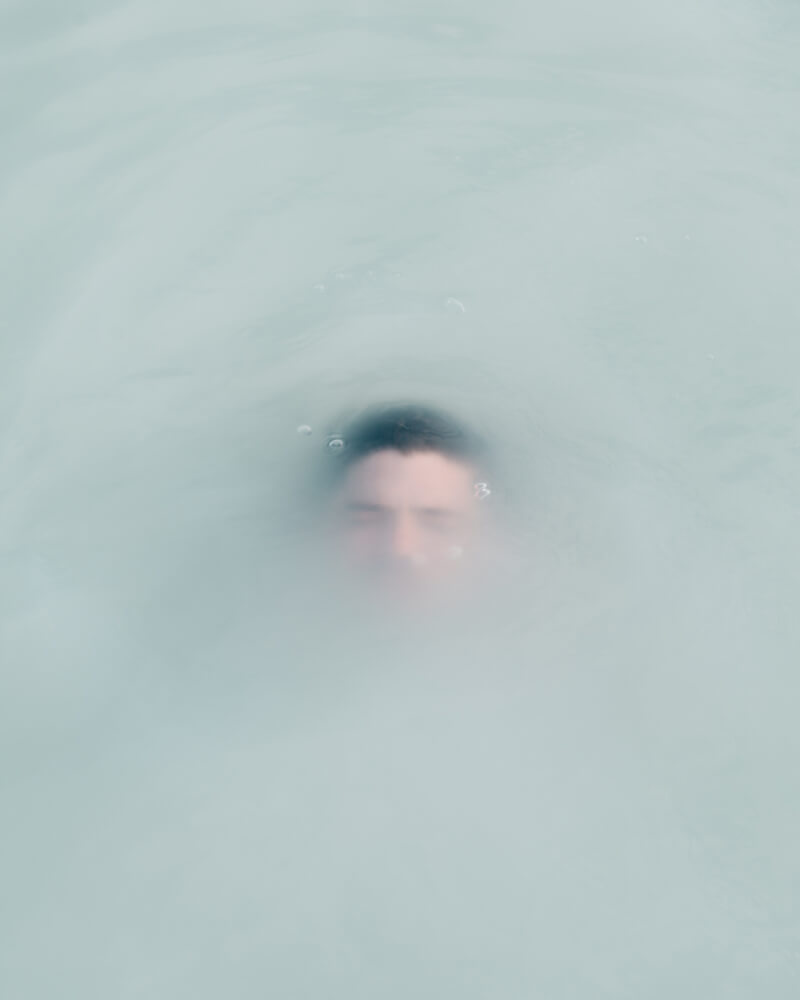
There are literally hundreds of thousands of photographs to sift through on Instagram. So what happens when some actually catch your eye? Then…what happens when you realize just how good that photographer is; when the photographer’s capability to animate still life and/or to petrify the madness of a subject’s surroundings becomes strikingly apparent to the viewer?
That might be what happens when you look at Daniel Dorsa’s work. Dorsa is a Brooklyn-based photographer whose partial client list includes Artsy, Converse, Red Bull, Rolling Stone, The New York Times, VICE, and Wallpaper*. Individual commission portraits such as Tom Hanks (for The New York Times), Do Ho Suh (for Victoria Miro Gallery, London), Bjarne Melgaard (for Artsy), and Tyler Glenn of Neon Trees (for Billboard) are a few worth mentioning. It so happens that the photographer and the interviewer (myself) are connected through our mothers, who are coworkers.
FRONTRUNNER peers through the lens with Dorsa.
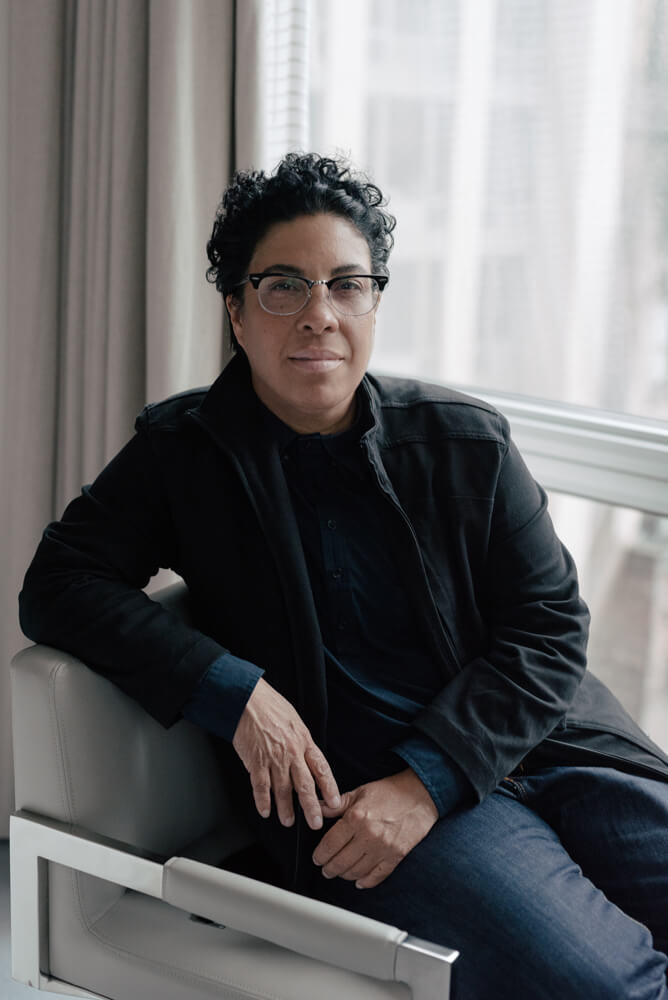
October 9th, 2017, New York
Photo credit: Daniel Dorsa for The New York Times
Let’s begin with how I know about you. Besides our Moms being great for always drumming us up, I saw your work (completely by accident) on Instagram. Did you have that in mind when you began your work as a photographer, or was it a later development?
Using Instagram as a form of marketing?
Even just as your own platform, it didn’t just have to be for exposure, just an expression.
Not necessarily. When I started photography, Instagram didn’t exist. I’ve been doing it since high school. That being said, it wasn’t a very conscious thing. I was using Flickr a long time ago, as other photographers did, then Tumblr, then Instagram became the natural next step as a medium to share work with other people. When I started, I didn’t think about Instagram as a social media thing at all. I thought of it as, “Oh! You can put cute filters on your iPhone photos.” I didn’t really do it until much later.
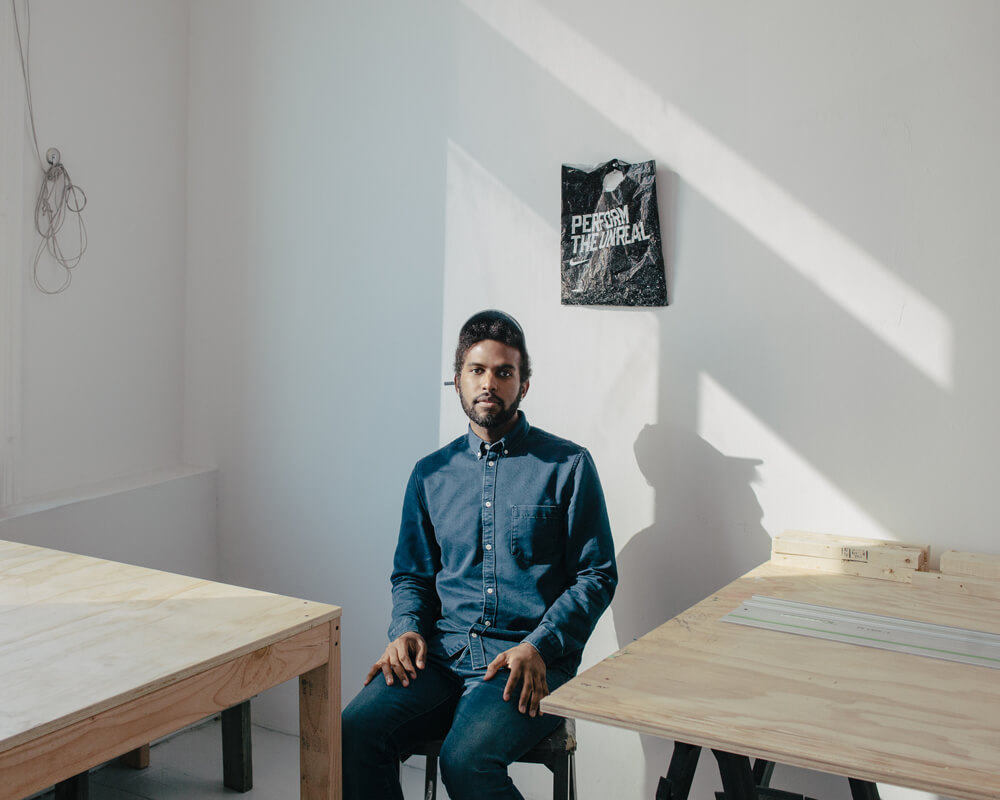
EJ Hill for Artsy (2016)
Digital C-Print
Courtesy of the artist
How would you classify the current body of work, if you had a singular term for it?
I’d say I skew towards environmental portraiture, editorial, and commercial work. As a one-sheet, quick little sentence, that’s what I would do. Still do a little still life and fashion work, but more than anything, it’s that.
I like how you use the term “environmental portraiture” – it connotes an understanding of the natural world, and it doesn’t necessarily mean that the surroundings themselves are biological. Everything is living, but it’s actually dead.
Absolutely. When I was in high school, I had to do a report on a randomly-assigned photographer. I got Arnold Newman, the person known for environmental portraiture photographer. I didn’t really think of it that heavily at the time, but now I do the same thing. He was working in the 50’s through the 70’s, but it was like a precursor.
Going back to the subject of “cute filters”, how do you feel about manipulation?
I spend probably more time than anything on color. Actually manipulating things? In terms of actually manipulating things, like erasing things that weren’t there or skin correction or liquifying body parts, I try to keep that to a minimum. If I didn’t get rid of something at the time, I think, “Well, it could have been gone in two days.” That person’s complexion could be gone in two weeks from the time I schedule to the time I shoot.
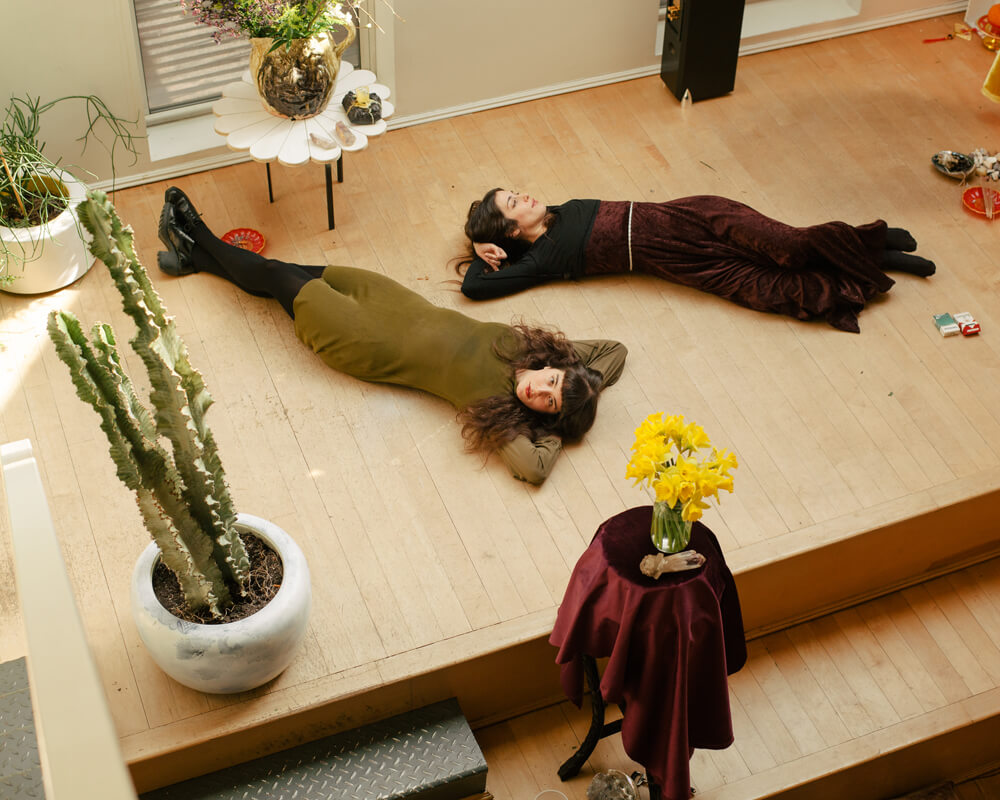
Tasseomancy (2015)
Digital C-Print
Courtesy of the artist
It’s fair to say that you exact some level of judgment on the final product, though. People might have a misconception about environmental portraiture as being so organic, untouched, the photographer is simply the finger behind the lens, etcetera.
I’m not a purist at all.
Purist is one of my favourite words of all time. We’ve crossed paths on Monocle and Artsy before (you as photographer, me as critic). Speaking of Artsy, their platform is digitising the gallery venue. While I believe it’s portable and an interesting way for people who may never get to a big gallery to gain access, at the same “feet in the gallery” does mean something specific. What are your feelings on digital galleries/spaces versus being in front of a printed photograph?
Like you said, I do appreciate that it democratises it a bit. When I was growing up in South Florida, you did have some exposure to some stuff, but it’s not like living in a major city. I can only imagine that having a really interesting impact on someone who lives in Middle America; that can be a great resource, to have something that a young person is interested in who doesn’t have the access to look at contemporary work. But one [experience] isn’t necessarily worse off than the other, and I don’t think one can replace the other. Seeing work in a physical sense is a great feeling. I love photo books, it’s one of the few ways we get to actually experience photography, by holding a book.
I can’t seem to get away from your working credits with The New York Times. Do you mind if we veer political for a bit?
Sure, yeah.
Given that The New York Times is consistently under attack in terms of editorial and photographic content, from the current president, do you feel that your work is simultaneously endangered and more important than ever?
I would say that’s a complicated question for me. Despite how terrible, terrible, terrible our current administration is, it has put a lot of pressure onto the Times and other publications to make sure that they’re always on top of it, always double, triple-checking all of their facts, that photographs are coming from good sources. If you shoot for the Times, period, you’re not allowed to manipulate your photographs at all. They actually have a system in place where they can detect if pixels are multiplied, just for journalistic integrity, makes perfect sense. I do think we’re in this really interesting time for journalism and photography, in general, where everything has to be right, has to be en pointe, it cannot be misconstrued, because you’ll instantly be on the attack [end] for it.
Some may argue that it just doesn’t matter with this administration.
Oh, it totally doesn’t matter. But for the grand scheme, it would matter. It could help push things forward in the future for younger journalists who are just getting into the field, trying to stay consistent.
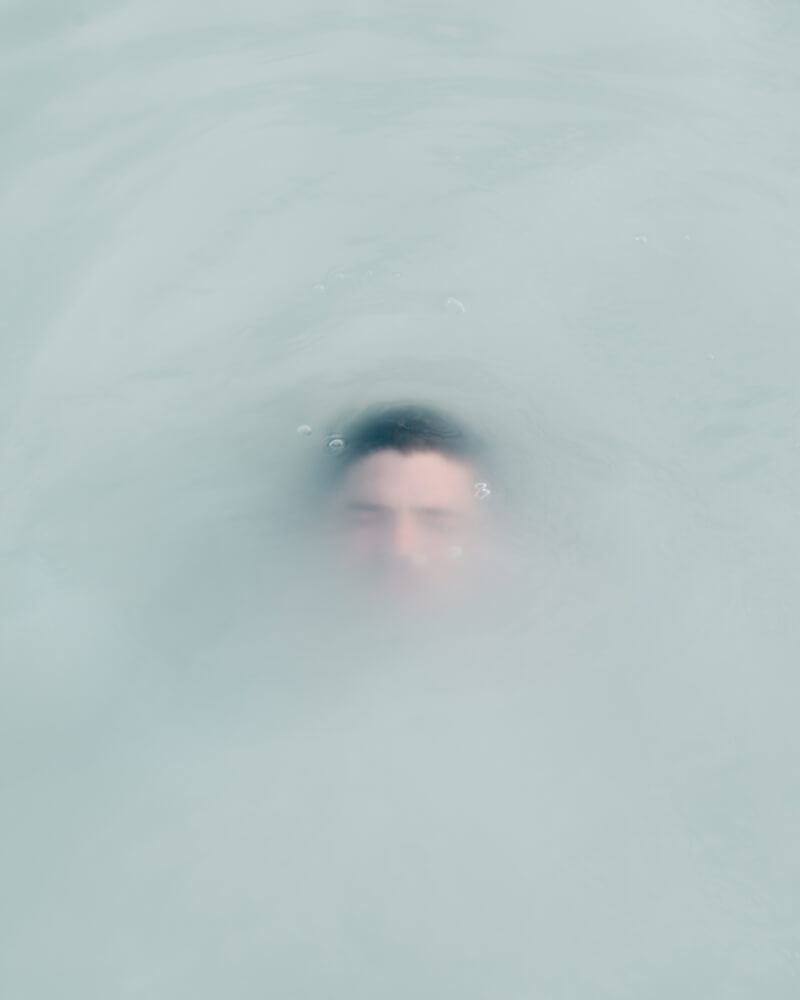
Blue Lagoon (2015)
Digital C-Print
Courtesy of the artist
Branching back into portraiture, I think it’s not unimportant in taking pictures of people. We seem so pathologically focused on taking pictures of politicians, and then taking pictures of people gets mushed into the background. It seems like people are being marginalised in terms of photographic content, in lieu of natural disasters and politicians.
It’s interesting keeping up with friends of mine who are doing all sorts of photo essays for different publications. There’s been a big draw to point the lens and interview people, normal people, who would have never had had this attention because of Trump, Trump supporters and people who voted for him. Maybe ten years ago, they would never shoot these people. Ever. Now, there’s a real, strong reason to focus on them. This great photographer, Phil Montgomery, did this amazing photo essay for Bloomberg on the RNC. I think he’s a Magnum nominee, he’s really great. One of my friends, George Etheridge, he did a great piece for the Times: he slept in a Wal-Mart parking lot for two weeks, with a writer, and started photographing other people who slept in Wal-Mart parking lots and interviewed all of them. Normal folk: non-celebrity, not a certain subculture, just anybody and everybody.
When you’re looking at your own photographs, do you remember parallels with historic photographers or do you align yourself with your own contemporaries?
I definitely lean towards contemporaries. I think historical photography is more of work I like to look at versus work I like to make. The work I like to make would more likely resemble something from someone I’m friends with, I admire, colleagues, etcetera. Before I was a photographer, I was also an assistant, so working under other photographers made a huge impact on how I approach my own work.
Going a bit back to the subject of fashion photography: do you think that fashion photography and environmental portraiture has reached a junction within the last 15 years? A lot of the post-production methodologies seem to have merged, if I’m not mistaken.
That’s definitely true. It’s also a generational thing, tending to like to look at advertisement or work that feels natural, that feels relatable. With that said, fashion photography in a magazine is so glitz and glam and boom –
It feels manufactured.
Very manufactured, very set-up. Like, “Check out the production values!” Now, the setting could be a lot more normal, a person could look at this like, “Oh, I understand, I can relate to this. I can own those clothes, be in that setting.” That trend of shooting fashion in an environment, making the environment just as important as anything else, I think is partially generational.
I think it’s just me, but I’m not fond of Juergen Teller’s work. Over-exposed, his subjects look dishevelled. Am I reading this right? Is there such a thing as “bad photography?”
I love Juergen Teller. He’s definitely not a technical photographer. That’s not his thing, like he barely knows how to use a camera-
Ahh!
You’ll be surprised at how many fashion photographers who have very technical setups have no idea how to shoot. Even someone like Mario Testino who doesn’t even know how to light things, his first assistant really knows how to do that. I like Teller not because he does anything technical, I like looking at him because he can get people to look so dishevelled and get them into crazy poses; like, that’s Beyoncé, you got Beyoncé to do that. You’re like, “How did you get this person to do this?” A person who would never agree to do it under any other circumstance. In terms of the larger question of “bad photography”, I would say yes and no.
As a viewer, you should be able to look at it and somehow understand what this person is trying to say. On a surface level. On an aesthetic level, I think there are lots of people who aren’t good at toning photos digitally, or who use expired film as an aesthetic crutch; you’re trying to look more interesting, but if you had a point-and-shoot, you wouldn’t be good at all.







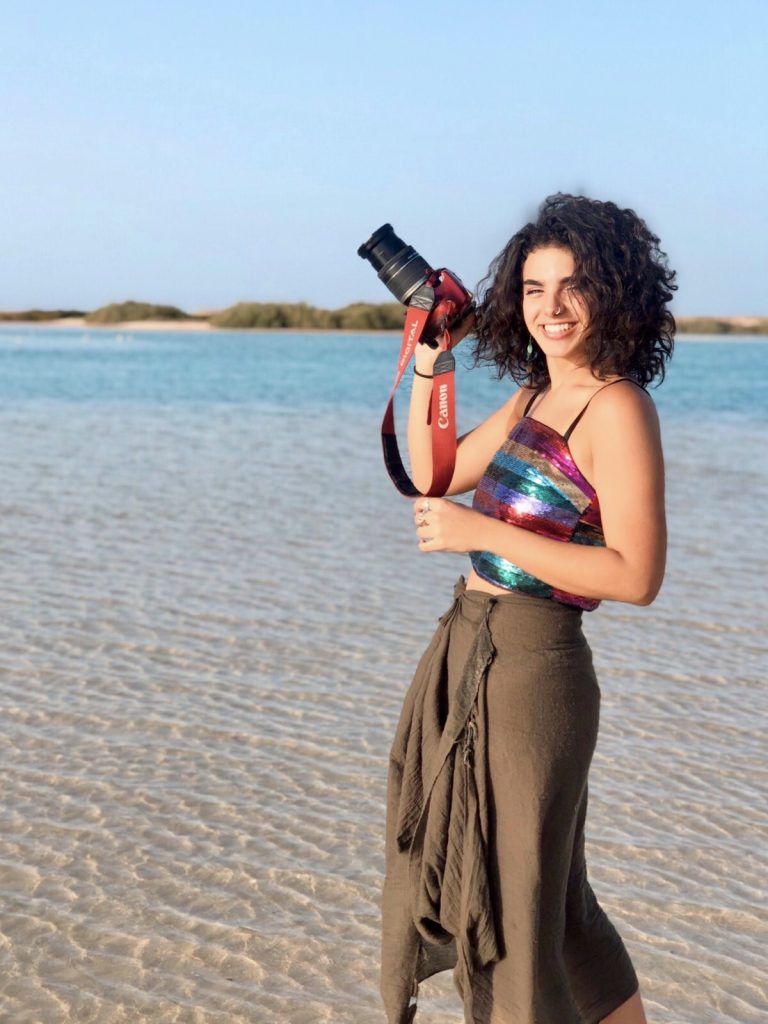
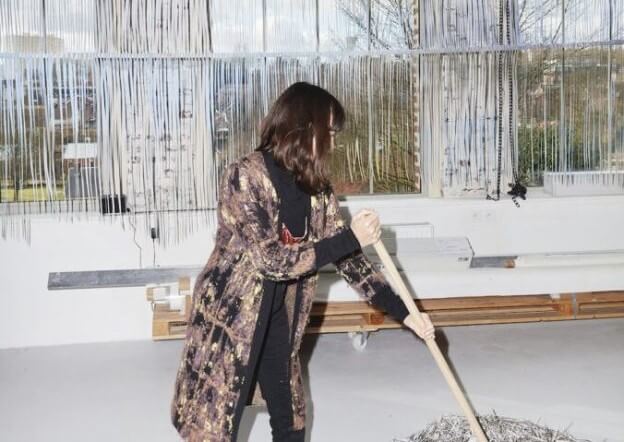
Responses